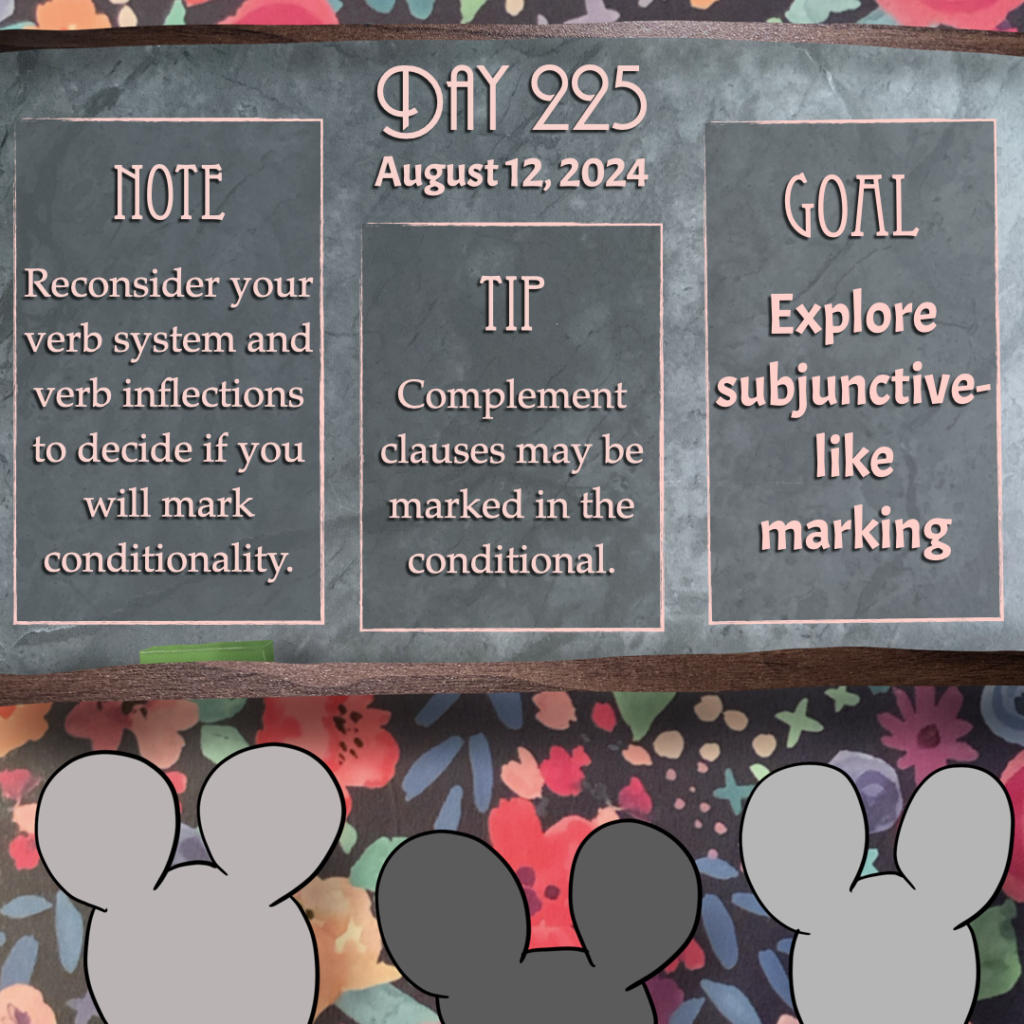
Goal: Explore subjunctive-like marking
Note: Reconsider your verb system and verb inflections to decide if you will mark conditionality.
Tip: Complement clauses may be marked in the conditional.
Work focus: Learn/Brainstorm/Try
Take a step back and reconsider your verb system and the inflections you’ve created so far. Explore options for marking information that generally falls under a subjunctive or conditional marker in languages that have them (what they are specifically called depends on the grammarians who are describing the language and its features!).
The kind of information I’m referring to specifically is how a language might treat an embedded clause like “I wish I were there with you.” Depending on your dialect of English, you may feel more comfortable saying “I wish I was there with you,” but “were” is an option here because it is marked in the old subjunctive—a form that only still exists in very specific instances of embedded clauses. The clause is marked differently because it is expressing information that does not currently exist—information that depends on some outside factor. In this case, it is expressing a wish, not a reality.
Languages use these forms in a variety of ways, to express a variety of situations that are conditional in one way or another. Explore options that interest you and start thinking about whether you want to create a new inflection (or extend the use of one you already have!) or whether you want to leave this information unmarked or marked through some other means, such as an adverb or adposition phrase.
